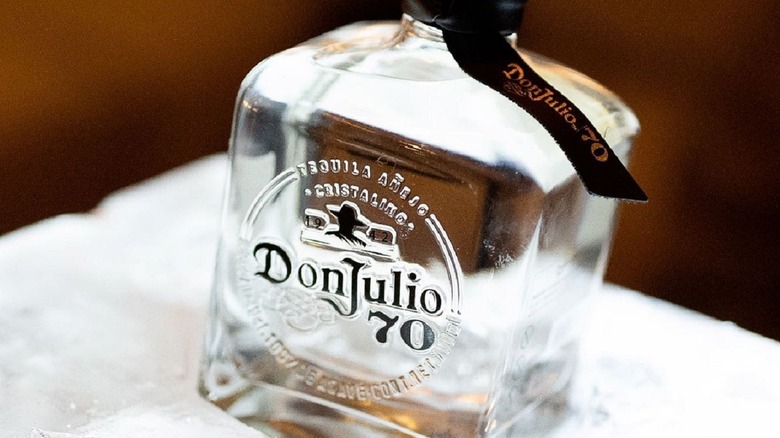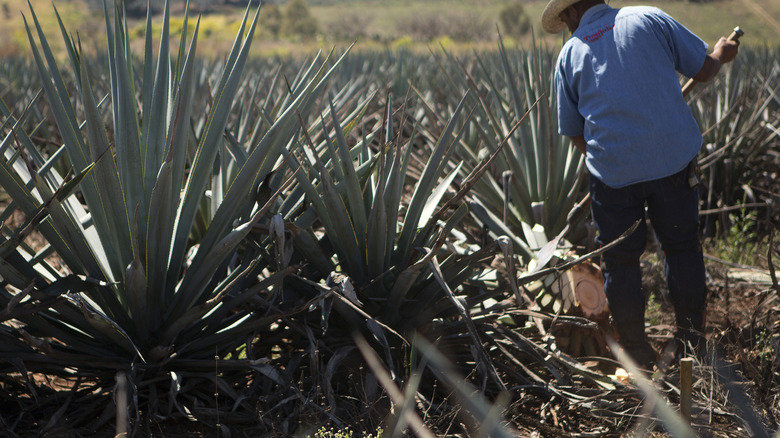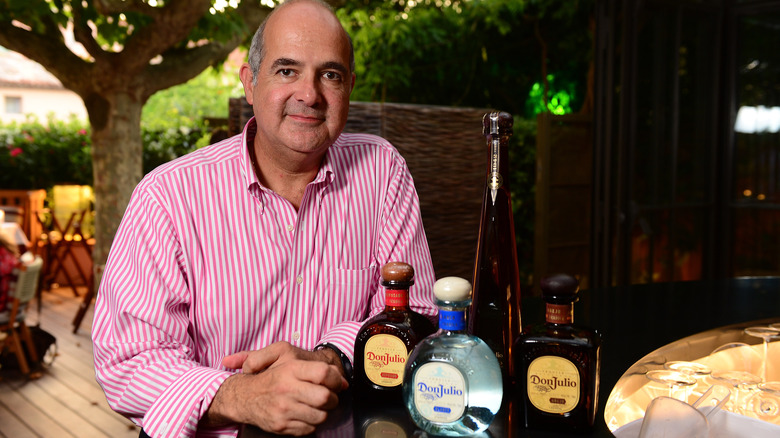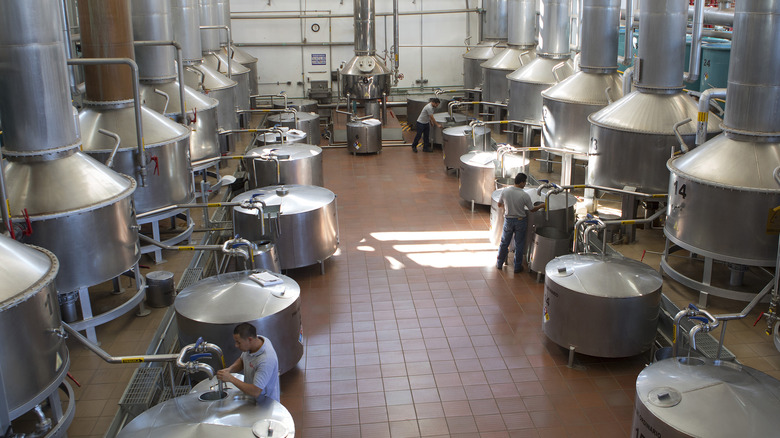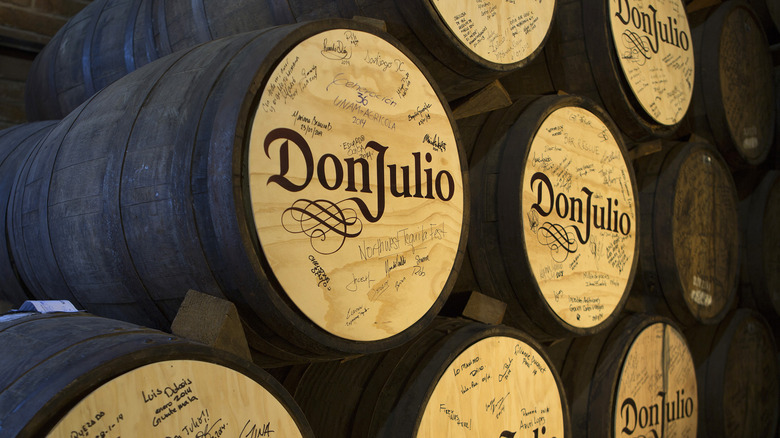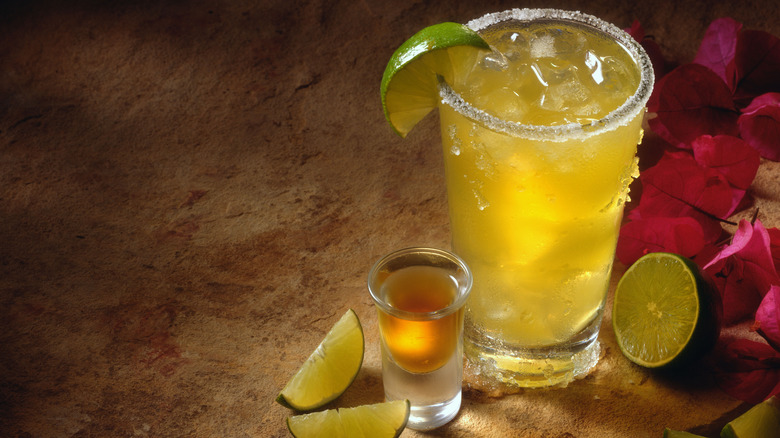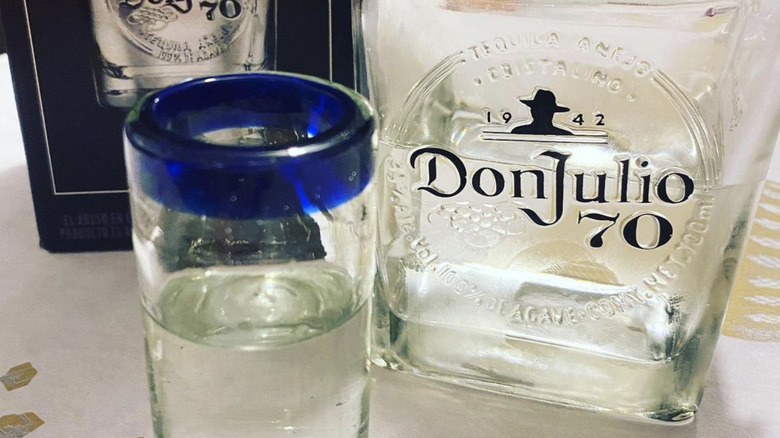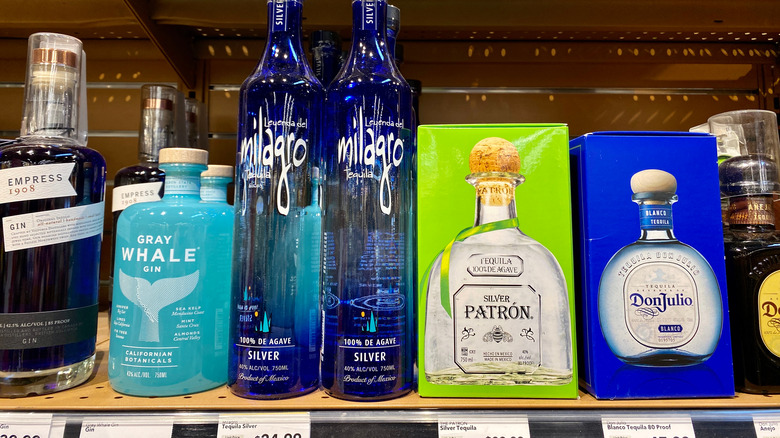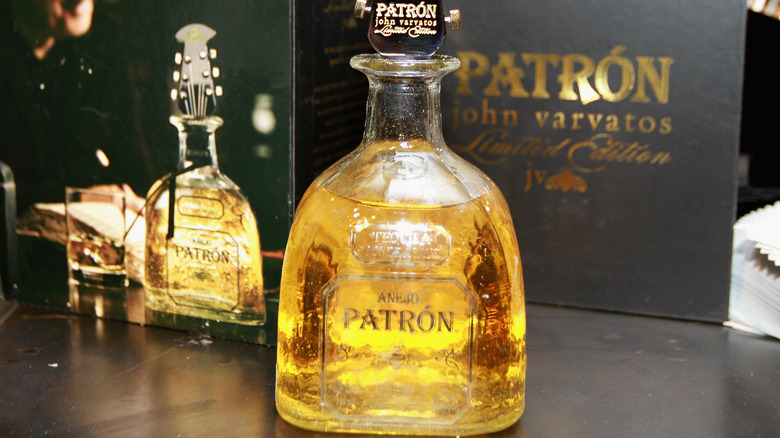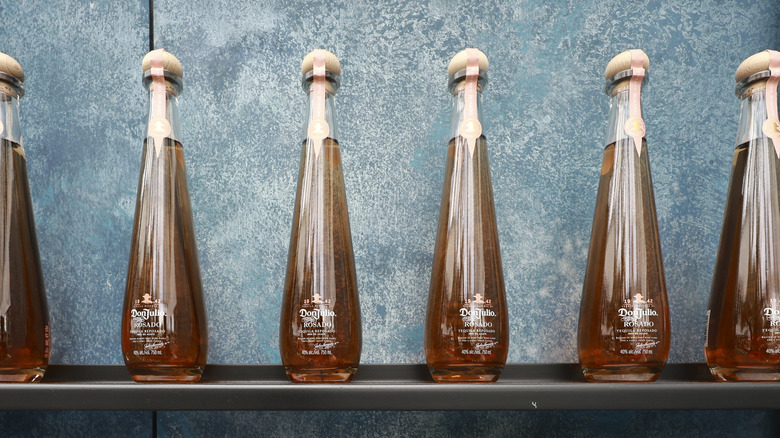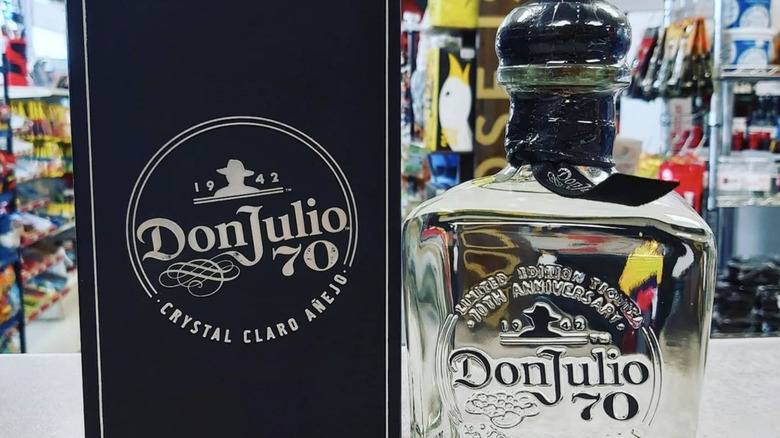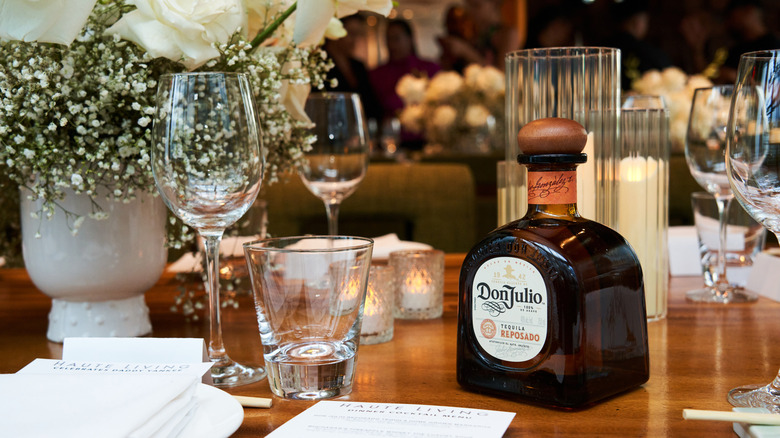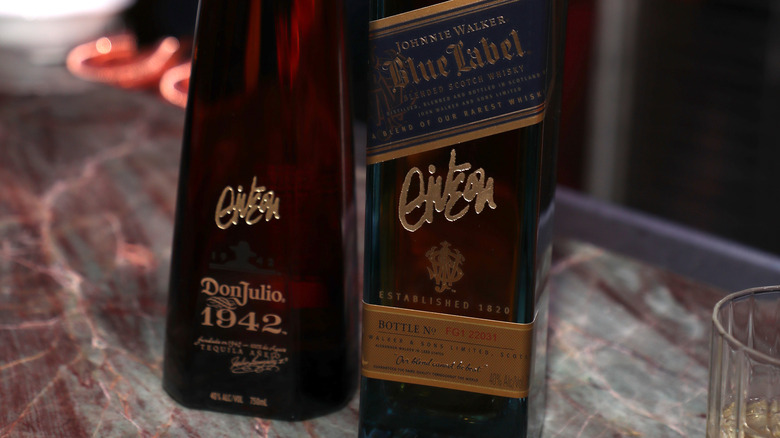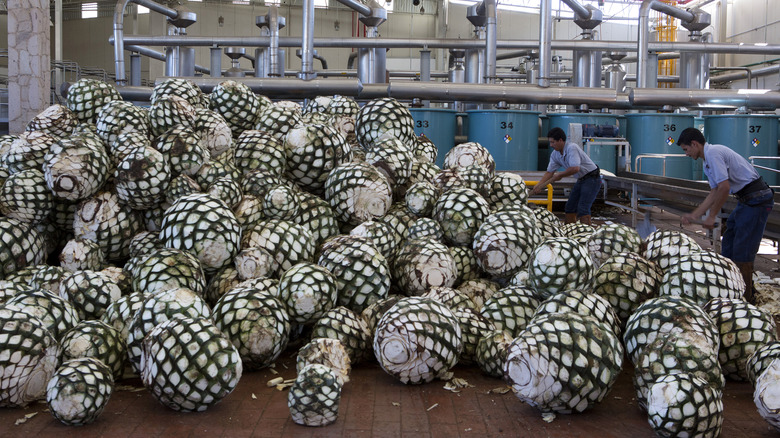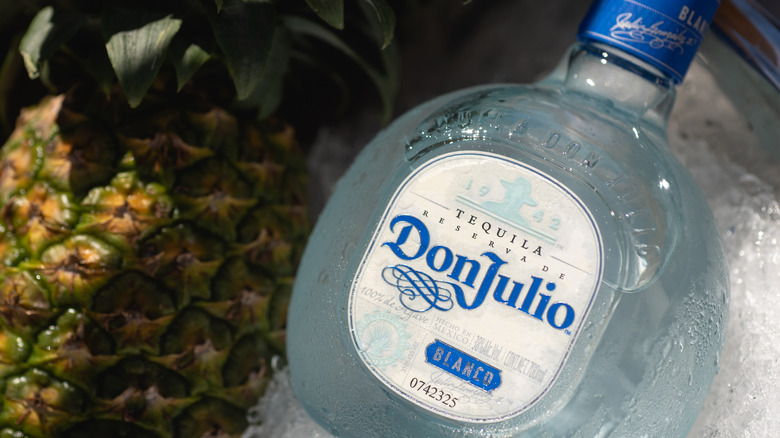Don Julio Anejo 70th Anniversary: The Ultimate Bottle Guide
You might know Don Julio's añejo by one of several different names: You might call it the 70 Cristalino, or Don Julio's clear añejo, or maybe you just refer to it as one of those fancy-looking tequila bottles on the top shelf. No matter what you call it, though, this 70th-anniversary tequila is an exciting celebration of the founder who changed the world of tequila — and we are here to provide the ultimate bottle guide so you don't have to keep guessing.
The first thing you need to know — so that you don't raise an eyebrow when the bartender pours out a shot of the 70 Cristalino — is that even though this is an añejo tequila, it doesn't have the typical amber color associated with long-aged añejo liquor. In fact, the 70 Cristalino is the world's first clear añejo, according to Don Julio. Don't send it back with a complaint that the bartender gave you some tequila blanco by mistake!
Who was the real Don Julio?
Don is a Spanish word that today is used to refer to distinguished gentlemen, which begs the question: Who was this distinguished Julio, and how did he end up owning a tequila empire?
The Don Julio brand was founded in 1942 by a man named Don Julio González. Actually, it might be more appropriate to call him a boy; after all, González requested a loan to start the local distillery that would grow into the Don Julio brand at the age of 17. After his father passed when he was 15, González became the head of his family household, according to the brand, when he first tried laboring as a farmhand but found that his nine-peso-a-week salary was insufficient to support the family. He then figured out that he could ride around selling tequila on horseback, a job that netted him significantly more money for two years before he took a risk, asked for a loan, and got to work making his own high-quality tequila.
González named his first tequila distillery La Primavera, which translates to "Springtime," and began growing and harvesting his own agave in the Jalisco Highlands using a novel farming strategy that put the plant at the center of the tequila-making process. This agave farming strategy is said to be practiced by farmers making Don Julio tequila today.
The story behind Don Julio 70 Cristalino
After 70 years of growth and success, the Don Julio 70 Cristalino was created in order to celebrate. This tequila actually hit the market in 2012, shortly before González's death. This product was engineered by Enrique de Colsa, Tequila Don Julio's master distiller, who was poached by González in 1999.
According to the Chicago Tribune, De Colsa had a background in the field of liquid processing, where he dealt with things like explosives; after that, he moved on to the world of spirits and perfumes, until he landed a role at the tequila company where he could experiment with exciting new combinations. The article reports the innovation of the 70 Cristalino was born from seven years of de Colsa tooling around with the process of charcoal filtration in order to create a clean, clear product. De Colsa is said to have engaged in the science experiment in order to honor González' and his dedication to creating a handcrafted product with extreme attention to detail.
Unfortunately, the Don himself didn't have a chance to revel in this innovation. In an interview with Haute Living, de Colsa shared that González never had the opportunity to taste the 70 Cristalino because of his terminal illness: "Although his sickness prevented him from tasting it, he held the bottle in his hands, proud of our team." and refers to the tequila as his baby.
How is tequila añejo made?
There are several different types of tequila, which vary in taste and appearance based on how long they have been aged. Tequila blanco is unaged — as soon as it's distilled, it usually gets bottled — and tequila reposado is aged between two months and a year, typically in oak barrels, which gives the liquid a golden color. Finally, the oldest and most expensive variety of tequila is called añejo, which is Spanish for "vintage." Añejo tequilas are aged over two years and usually are an even deeper golden or light brown color.
Don Julio's agave fields are located in Atotonilco. The original Don Julio was very invested in making sure that the process of harvesting agave was precise: on Don Julio farms, agave is planted with more space for each plant. Only the healthiest agave is selected and harvested for its core, or piña, at each plant's point of maximum maturity, which the brand insists makes for a more uniform product.
After the piñas of the agave are harvested, they are brought to the Don Julio distillery, where they are loaded into ovens called autoclaves and baked for several days to access the sweet agave syrup hidden within. After they've been baked, the piñas are shredded and mashed into syrup, then mixed with water. Yeast is added to this liquid and then the mixture is left to ferment; and then, finally, it's placed into barrels to age.
What makes Don Julio 70 Cristalino different from other añejos?
Don Julio 70 Cristalino is set apart from other añejos by its aging process — the 70 Cristalino is aged in American white oak barrels to prevent the coloration of the tequila within that is considered typical of tequilas that have been aged over two years. The 70 Cristalino is actually then charcoal-filtered, to get rid of all the possible color that might have been infused by the white barrels. This process leaves behind a clean, clear product that highlights the natural flavors of agave and citrus, and deemphasizes the classic woody añejo musk.
This is the process that de Colsa came up with; the charcoal-filtering strategy is proprietary to Tequila Don Julio, and involves using activated charcoal to cleanse the liquor. Activated charcoal is made through a process wherein charcoal is exposed to heat and oxygen, which turns the substance into a fine powder with the power to purify, according to Healthline. Whatever Don Julio does with it, it works; the 70 Cristalino comes out looking like water.
What does Don Julio Añejo 70 Cristalino taste like?
Of course, despite its clear color, the Don Julio 70 Cristalino is still every bit a tequila añejo with all of the depth of flavor associated with traditional brown añejo tequilas. Here's how a sip of Don Julio 70 Cristalino goes down: At the first moment when the tequila hits your lips, you get hit with a sensation of brine and a touch of citrus. Next, as the tequila embraces your tongue, you start to perceive the body of the liquor, which is full, round, and oaky. After that comes the sweet finish — this tequila añejo contains notes of vanilla and caramel that gradually reveal themselves as your sip travels through your mouth and slips your throat.
Overall, one sip of the Don Julio 70 Cristalino takes your mouth on a journey — from sour start to sweet finish — and in doing so highlights the natural flavor of the agave at the heart of this product.
How to drink Don Julio 70 Cristalino
How you drink your tequila should differ based on whether you're buying blanco, reposado, or añejo tequila. Blanco tequila is the perfect style to mix with other ingredients and create phenomenal mixed drinks. Aged tequila is better to drink on its own, so you can savor the natural flavors within each sip — Don Julio 70 Cristalino definitely falls into the latter category. This tequila is complex (and expensive) enough that you should absolutely try sipping this tequila neat or at least on the rocks — it has a lot of subtleties to its flavor that will be lost if you combine the tequila with other ingredients.
With that said, if you've had your neat Don Julio and are still interested in making a few mixed drinks, treat your liquor right by combining it with fresh ingredients. Try using Don Julio 70 Cristalino in a classed-up margarita, using real lime juice, simple syrup, egg white, and Cointreau or Grand Marnier, for a more high-class alternative to Triple Sec.
Highball drinks you can make with this tequila also include a Don and soda or a Don and pineapple. If you're feeling particularly excited to shake up something special, you can also drink the 70 Cristalino in a martini, a mule, a negroni, or even a tequila spritz.
How much does Don Julio 70 Cristalino cost?
Don Julio is a lot cheaper to get your hands on in Mexico —importation taxes mean that drinking Don Julio in the U.S. is definitely going to set you back a considerable sum. Depending on the purveyor, a 750-milliliter bottle of Don Julio 70 Cristalino might cost a shocking $80, at least at the time of publication. That means this tequila definitely classifies as a more expensive, mid-tier liquor. It is significantly more expensive than the normal-colored añejo offered by the same brand — but much less than the brand's top-tier Don Julio 1942 tequila.
Compared to other mid-tier bottles, it is still safe to say that the Don Julio 70 Cristalino is pricey — a 750mL bottle of el Mayor Añejo costs around $45, and the same size bottle of Casino Azul Añejo costs around $70, at the time of publication. To decide which tequila añejo best suits your needs, look into the flavor profiles and see what appeals before buying.
Don Julio 70 Cristalino v. Patrón Añejo
A tequila that's very similar to Don Julio 70 Cristalino is the Patron Añejo, another tequila añejo made in Jalisco, Mexico. These alcohols are both classified as añejo because of the length of their aging process; however, it's important to note that Patrón is not using charcoal filtration on the liquor, so this tequila is a warm amber color.
The tasting notes are similar: While the 70 Cristalino is citrusy and oaky, with notes of vanilla and caramel, Patrón Añejo is oakier, with notes of vanilla, raisin, and honey, and a smokier finish than the 70 Cristalino. A 750-milliliter bottle of Patron is around $60, at the time of publication, so it's a significantly cheaper alcohol option than the 70 Cristalino.
Overall, the liquors may exist under the same name, but they exist to fill very different needs — make the choice based on how you plan to drink your tequila.
Other Don Julio tequila styles
In addition to the specialty Don Julio 70 Cristalino, Tequila Don Julio also offers other basic tequilas, including a blanco, reposado, and regular añejo. In more recent years, though, the brand has also expanded to create more specialty tequilas. In 2013, the 70 Cristalino was released; since then, a couple of other fancy, premium tequilas have also made it to the roster.
The first of these is called the Primavera, which is a limited edition tequila reposado named for the first distillery that Gonzàlez opened. Don Julio Rosado is another specialty, most notable for its delicate pink color — it's the rosé of tequilas. After González's death, the company released Don Julio 1942 commemorating the year that the legend founded the company.
Finally, Don Julio Ultima Reserva is a mixed tequila made from several differently-aged tequilas, including tequila made from the last batch of agave that González and his family planted in 2006.
How to store Don Julio 70 Cristalino
Tequila should always be stored away from sunlight but does not need to be refrigerated. This is part of why you'll often see tequila bottles lining the shelves of bars — the other reason is that it helps bartenders upsell using call brands, or a spirit requested by name.
Your Don Julio 70 Cristalino is no exception to this rule. Make sure that in addition to storing it somewhere cool and dry, the bottle is sealed tight. This simple action helps retain flavor and freshness — after you open a bottle of liquor, its contents, which have been aged so carefully, become susceptible to evaporation and oxidation, which essentially just means that oxygen weasels its way in there and ruins the natural flavors. You definitely don't want this to happen to your nice bottle of Don Julio, so be careful to stopper it up tight if you're not planning on drinking the whole bottle in one go.
he reason behind the shape of most Don Julio bottles
Don Julio González is said to have had a vision for what he wanted his product to be like, and that vision extended to the packaging. In the time when González got started crafting and vending his tequilas, tequila was considered primarily a working man's drink, meant to be guzzled quickly and drunk to excess. Because of this, the average tequila bottle design was definitely lacking a certain design-focused touch, according to VinePair, tequila bottles tended to be long and ugly, and they were kept away from view when people came together to eat.
Of course, what worked for the run-of-the-mill tequila brands was not going to garner sufficient attention for Don Julio's luxury tequila. Emily Bell writes that González wanted his tequila to be distinctive, so he intentionally made the bottles short and squat. This made them the perfect size and weight to pass around and made it easy to leave them on the table instead of hiding them underneath. Added visibility never hurt anyone.
Two Don Julio tequila bottles that stand out from the pack
With that said, not every Don Julio bottle fits the fat, short model that González intended for table dining; there are a few bottles in the repertoire of the Don Julio brand that really stand out. These tequilas are even more expensive than the 70 Cristalino, and they have bottles that look almost bizarre next to the Don Julio old reliables because they are designed to communicate that the product within is even more special.
The Don Julio 1942 tequila is bottled in a long and skinny shape, almost like a thinner, taller wine bottle, with a very delicate neck. This shape is a conscious choice on behalf of the company, which chose the shape to gesture to the shape of the leaves of agave plants, and perhaps also as a wink to an updated version of the tequila bottles of yore, which were popular when Don Julio got his start.
Meanwhile, the Real bottle is even shorter and fatter, with metal depictions of agave fronds that look a little bit like hands grasping the weight of the bottle. Everything about this bottle screams fancy — which is appropriate, given that the tequila inside is extra añejo, and clocks in at a calm $400 retail price at the time of publication. Oof.
Don Julio's agave farming standards
Don Julio Gonzàlez is heralded by many as a pioneer in the world of tequila. From the very beginning of his reign as tequila tycoon, he believed that quality should come over quantity, and acted on that belief even when it caused expenses. This meant that each agave plant on González's farms is treated royally: it receives ample space, individual care, and is harvested at the exact moment of ripeness.
González's exacting standards for agave farming ended up creating new norms in the world of tequila production. His tequila, referred to as the first luxury tequila, set the tequila world ablaze and has inspired many other tequileros to set up shop and do so with pride. It's safe to say that those who have followed in the wake of González and been inspired by his dedication to his product include any tequila brand which advertises hand-harvested agave, from el Jimador to Espolòn.
Where Tequila Don Julio is going after González's death
The real Don Julio died in March of 2012, at the age of 87 — soon after the introduction of the Don Julio 70 Cristalino. He left the brand in the capable hands of de Colsa, the brand's Master Distiller, who has continued experimenting and creating new innovations in the tequila distillation process.
Three years after González's death, in 2015, Diageo officially acquired the brand and pledged to invest $400 million in the business to expand production. In a statement released by Diageo after Gonzàlez's death, the company announced, "It is an honor that each one of our bottles carries the name of the man who dedicated his life to one of our [country's] greatest icons: tequila. His values and philosophy will always thrive in the fabric of our brand." The representative shared that "His main ingredient was passion and passion above all else defines excellence," promising to help his legacy live on through the passion infused into the product.
Don Julio is innovating... with drones?
In 2023, Diageo announced that it plans on introducing drones to the agave fields owned in Jalisco, Mexico, where all the agave used in Don Julio tequila is grown, along with the agave used to produce Casamigos and other subsidiaries of Diageo. This action is a move made to work towards sustainability goals that the company has set for 2030.
The drone system being introduced involves buddy drones that will travel together through the agave fields. One drone will monitor growth and raise alerts about specific plant needs, while the other will work to water and fertilize the plants, and apply pesticides where necessary. This system will be more effective than the former system, which involved the employment of many tequileros whose job was to tend to the plants' specific and diverse needs.
Agave farming is a tense and long process — agave plants take up to 7 years to mature fully, and they are very sensitive. The automation of the system has already helped Diageo catch several ways in which their former system was wasteful: apparently, the company learned that it was wasting water by not concentrating watering in the morning, when the weather is calmer and the plants are more receptive.
